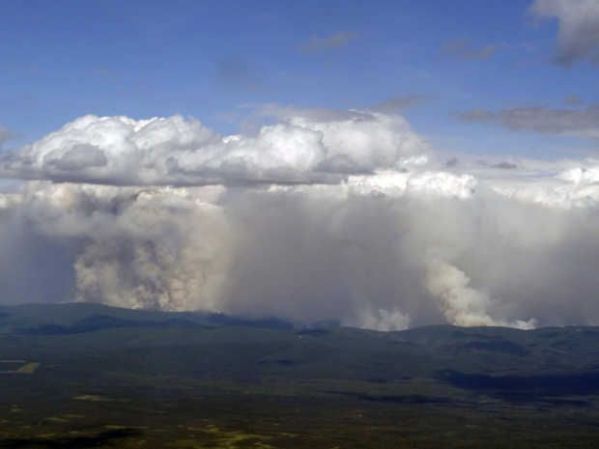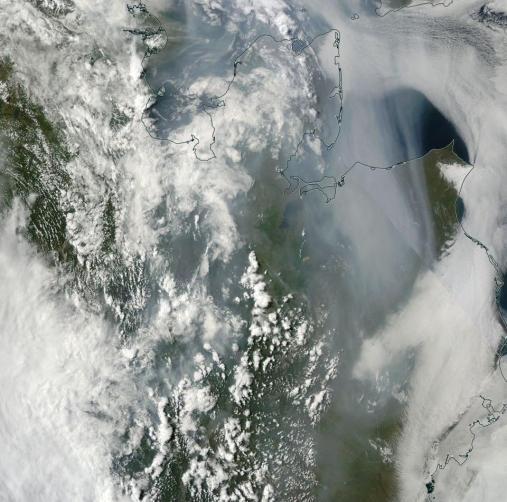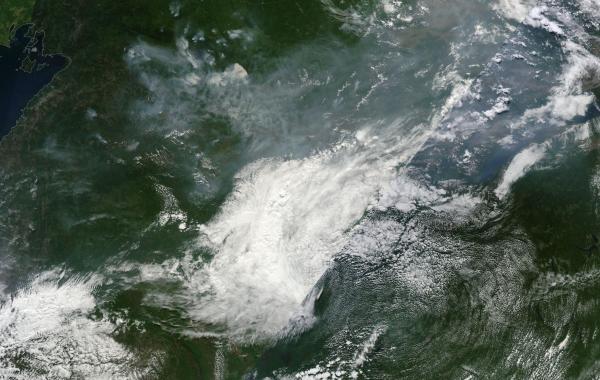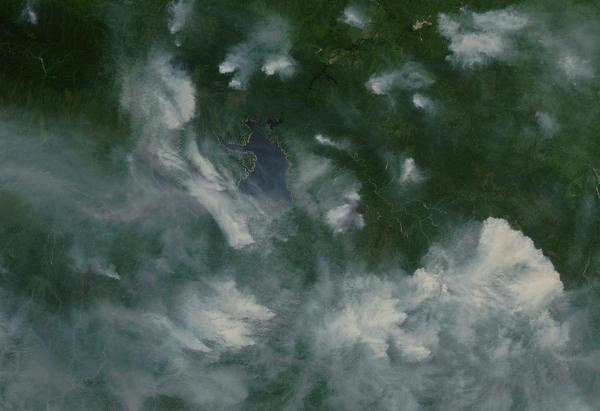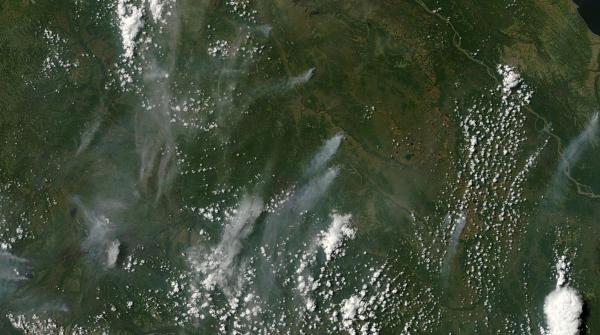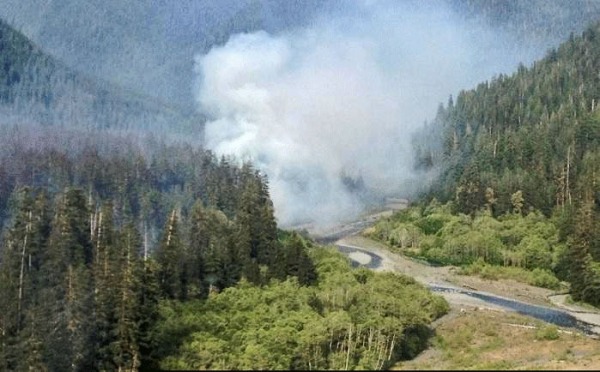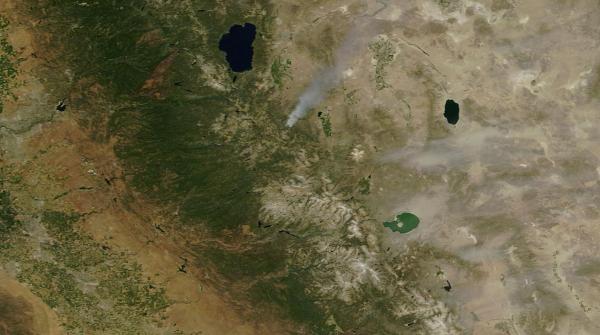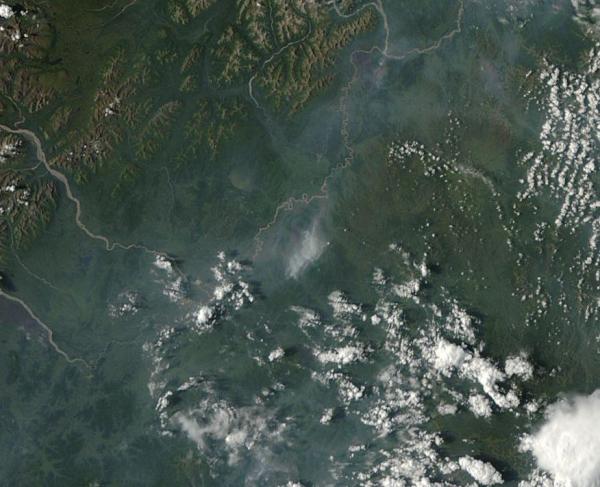About 75 years ago, a reindeer fell sick to anthrax. Laying down to die upon the frozen ground of Siberia, the poor creature’s carcass froze in the Arctic climate. With it, the deadly infectious bacteria teeming in the deer’s body were stilled into an inert latency.
In the decades after, billions of tons of carbon bellowed out into the world’s air from fossil-fuel burning and carbon-spewing machines spreading around the globe. The heat-trapping properties of these carbon gasses subsequently warmed the Arctic and the frozen permafrost that was this ill-fated deer’s — and the anthrax’s — tomb.
(Extent of Northern Hemisphere permafrost. Due to human-forced climate change, this permafrost zone is starting to thaw. At about 2 C worth of warming, a majority of this region will be under thaw pressure. Thawing permafrost releases carbon dioxide and methane, unearths ancient diseases, and causes the ground overlaying the permafrost to collapse. Image source: NSIDC and Google Earth.)
For the deer, there would be no second life, as rising temperatures bring decomposition 75 years after its death. But as the flesh of that deer warmed, the long-frozen anthrax bacteria began to revive. Over the past week, this climate-change-released anthrax spread back into the deer population, killing about 2,300 reindeer. It also leapt into humans, resulting in dozens of hospitalizations, with half the victims as children — and so far, one human death.
The Permafrost Tomb Opens to Release Undead Microbes
Permafrost, when boiled down to its basics, is primarily composed of frozen dead things. Much of the material is leaf litter, grass, wood, bark, flowers, or other frozen plant matter. But interspersed among what amounts to a many-meters-thick pile of frozen peat stretching for thousands of miles around the northern continental boundaries of our world, are millions and millions of entombed animal carcasses. Many of these are thousands of years old. Some have been there for almost two million years. And each of them may carry latent viruses or infectious bacteria.
(Thawing permafrost causes the land to buckle and crack even as it releases ancient microbes long entombed in ice. Image source: NSIDC.)
Cold does not always kill these microbes, which are often resilient to harsh conditions. Viruses are famous for their ability to remain dormant in far-flung biological reservoirs for geological time periods. Meanwhile, bacteria are capable of sporification, the generation of a tough protective shell to ward off extreme conditions. As permafrost thaws due to human-forced climate change, these ancient, long-dormant pathogens can become active.
To this point, LiveScience states that:
Anthrax isn’t the only pathogen potentially biding its time in the permafrost. In 2015, researchers announced that a giant virus they’d discovered in the Siberian permafrost was still infectious — after 30,000 years. Fortunately, that virus infects only amoebas and isn’t dangerous to humans, but its existence raised concerns that deadlier pathogens such as smallpox, or unknown viruses thought extinct, might be lurking in permafrost.
Human activities such as oil drilling and mining in formerly frozen Siberia could disturb microbes that have been dormant for millennia (emphasis added).
As Bloomberg recently noted, the surprises coming from climate change can be similar to those hidden in a box of chocolates. But in this case, the nasty center happened to be anthrax.
Permafrost Thaw Crumples the Alaskan Highway
Thaw of the frozen, carbon-rich permafrost as the world is forced to warm not only poses an increasing risk for dangerous infectious disease outbreaks, it also results in weird changes to the land itself. Thaw causes permafrost to sag — sinking into pits, holes and bogs as the crystalline lattice of the old, melting ice collapses. Anything on top — be it buildings, highways, runways, animal paths, pipelines or telephone poles — can find its foundations undermined.
Such is the case with the Alaska Highway running from central Alaska southward through northwestern Canada. Constructed during World War II, this road has long been a critical 1,387-mile artery through which goods and traffic were delivered to the far north. With human-forced climate change causing the permafrost to thaw, the Highway and the communities it supports are in jeopardy. Every year, large cracks form in the road’s supporting structure — some of them wide enough for a grown man to walk in — as the permafrost beneath the road thaws and deflates.
(Permafrost thaw is causing northern roads like the Alaska Highway to crack, sag and buckle. Image source: NSIDC.)
Jeff Currey, materials engineer for the northern region of Alaska’s Department of Transportation, recently noted:
“The Romans built roads 2,000 years ago that people are still using. On the other hand, we have built roads that within a year or two, without any maintenance, look like a roller coaster because they are built over thaw-unstable permafrost.”
It now costs more than 50 million dollars every year just to maintain the Alaska Highway. That’s about seven times the average maintenance cost of a road of comparable length. Climate change’s impact on the permafrost is responsible for this increased cost. With so few roads running through the far north, the Alaska Highway is critical to the communities it feeds into. However, as climate change causes the road to break and buckle, the future stability of these communities is called into question.
About 1,800 Billion Tons of Flammable Carbon in the Thawing Permafrost
As if thawing, unearthing of disease-carrying carcasses, and sagging lands causing infrastructure to buckle and collapse weren’t enough, the permafrost itself contains enough carbon to significantly amplify human-forced warming. Some of this carbon will be released due to the process of warming-induced decay. In other cases, since much of that thawed permafrost is flammable peat-like material, direct burning becomes an even more rapid carbon-release mechanism. The vicious cycle can be summed up like this: warming = permafrost thaw = more fires = warming.
“You have this climate and fire interaction, and all of a sudden permafrost can thaw really rapidly,” Jon O’Donnell, an ecologist with the National Park Service’s Arctic Network, recently noted in Mother Jones.
In total, it’s estimated that between 1,300 and 1,600 billion tons of carbon is sequestered in just the top three meters of permafrost. Another 400 billion tons of carbon is estimated to be contained in the deep permafrost. To put these numbers in perspective, the atmosphere today holds about 850 billion tons of carbon. So if all the carbon in the permafrost were to hit the atmosphere as CO2, for example, we’d be sitting near 1,000 ppm of that heat-trapping gas, a truly catastrophic number. Thankfully, various inertia keep such a thing from happening all at once. Permafrost thaw takes time, and the process of transforming permafrost to atmospheric carbon does not occur instantly or completely even after the permafrost thaws. Nonetheless, the amount of heat-trapping gasses coming out of these thawing lands is expected to be significant.
As the Arctic is warming by about 0.6 degrees Celsius each decade, the permafrost thaws and some of the carbon that’s entombed there enters the Earth’s carbon cycle. This happens as the frozen lands heat up and are transformed into peat bogs or piles of dry, peat-like material. Methane and CO2 bubbles or wafts up from the newly-formed lakes and the decaying material below. The thawed peat starts to decay. If the decay is dry, then the carbon is released as CO2. If wet, it tends to release more as methane. At times, this gas blasts great holes in the surface or causes the topsoil and grass to ripple as a methane-filled blister rises beneath it. All that newly-thawed material becomes fuel added to the ever more numerous fires that continue to bloom and rage throughout the northern parts of the world.
(Alaskan wildfire burns through a permafrost zone near a frozen river. Image source: National Park Service.)
In total, it’s estimated that around 160 billion tons of this carbon could hit the atmosphere by 2100. That would be like adding nearly two billion tons to the carbon emission from fossil-fuel burning every year. All told, such an emission would be enough to increase atmospheric CO2 concentrations by around 35-75 ppm (depending on the state of carbon sinks), if it all emitted as CO2. The extra carbon in the air would then trap more heat, generating a self-reinforcing cycle that we call an amplifying feedback.
The frozen land therefore releases disease as it thaws, it crumbles infrastructure, and as it dries and melts and wettens and burns it releases still more heat-trapping gasses. All reasons why we should be very trepedacious about the now-thawing permafrost — embedded as it is with zombie anthrax — as well as the various and multiple other surprises human-forced climate change continues to serve up.
Links:
Anthrax Spewing Zombie Deer are The Least of Your Warming Planet Worries
The Alaskan Highway is Literally Melting
Alaska Sinks as Climate Change Thaws Permafrost
Climate Change and the Permafrost Carbon Feedback
More Wildfires = More Warming = More Wildfires
5 Deadly Diseases Emerging From Global Warming
Hat tip to Colorado Bob (who has been warning about diseases due to thawing permafrost for some time now)
Hat tip to Greg
Hat tip to DT Lange
(UPDATED)








